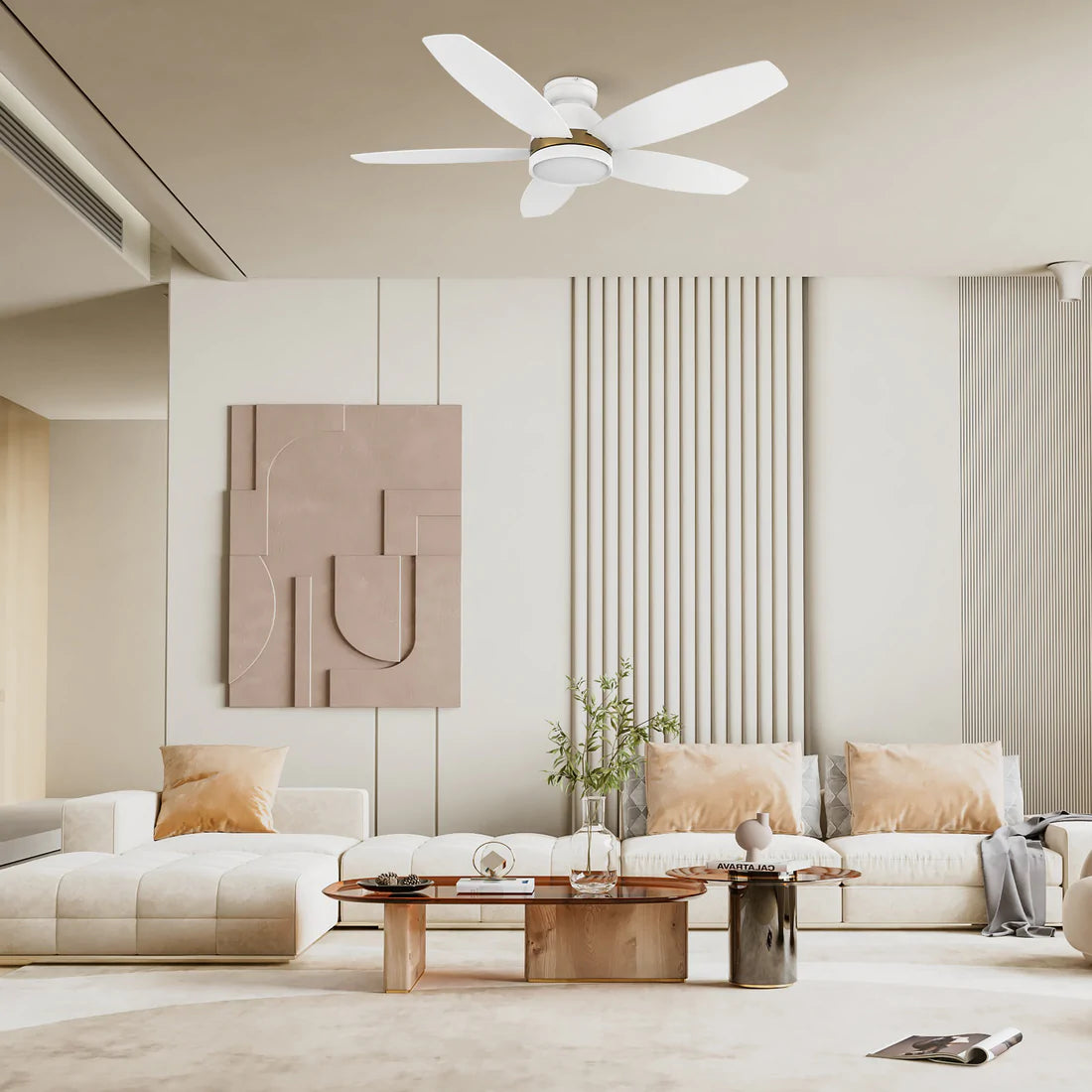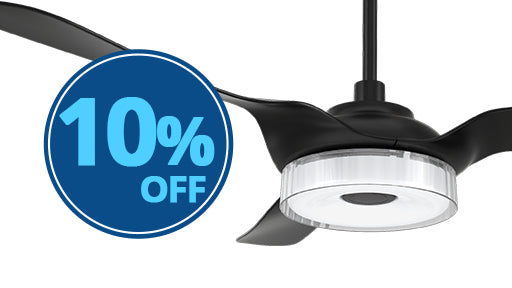Indoor humidity plays a crucial role in creating a comfortable and healthy living environment. Achieving the ideal indoor humidity level is essential for maintaining the well-being of both individuals and the home itself. Indoor humidity affects our health, comfort, and home's structure. It can be too high or too low.
This guide will discuss the significance of maintaining the correct indoor humidity level. It will also cover the consequences of both high and low humidity. Additionally, it will provide information on how to measure and maintain the ideal balance.
What is Humidity?
Humidity is a measure of the concentration of water vapor in the air. It represents the extent to which the air is saturated with moisture. Warmer air can hold more moisture than cooler air, so the humidity level can vary with changes in temperature. Absolute humidity refers to the actual amount of water vapor in a specific volume of air, while relative humidity expresses this amount as a percentage of the maximum moisture the air can hold at a given temperature.
What Causes Humidity?
Several Factors Can Influence Humidity Levels:
- Temperature: As mentioned earlier, temperature plays a significant role in humidity. Warm air can hold more moisture than cold air. When air cools, it gets more saturated. If it reaches its dew point (100% humidity), condensation happens, forming clouds, fog, or rain.
- Water Bodies: Proximity to water bodies like oceans, lakes, or rivers can increase humidity levels. These bodies of water release moisture into the air through evaporation.
- Geographical Location: Different regions of the world have varying humidity levels based on their climate and proximity to water sources. Tropical regions tend to have higher humidity, while deserts typically have lower humidity.
- Weather Systems: Weather patterns, such as fronts and low-pressure systems, can affect humidity levels. For example, warm fronts often bring moist air, increasing humidity, while cold fronts can lead to cooler and drier conditions.
- Daily Activities: Activities like showering, cooking, and even breathing release moisture indoors. Inadequate ventilation can lead to rising humidity, potentially causing discomfort and mold growth.
The Ideal Indoor Humidity
Maintaining the ideal indoor humidity level is crucial for our overall health and well-being. What is a good humidity level?
The 1986 article in Environmental Health Perspectives states that a humidity level of 40%-60% indoors is considered ideal for health. Maintaining the right indoor humidity makes living comfortable, improves sleep, and stops the spread of airborne illnesses.
Low humidity refers to indoor air that contains a relatively small amount of moisture or water vapor. In simple terms, it means the air inside your home is dry.
What is high humidity? It refers to indoor air that contains a significant amount of moisture or water vapor. In simple terms, it means the air inside your home is damp or moist.
Harms of High Humidity Levels

Respiratory Issues
High humidity can increase the moisture in the respiratory tract, exacerbating symptoms in individuals with asthma and allergic rhinitis.

Mold Growth
21% of the 21.8 million cases of asthma annually are attributable to residential dampness and mold. High humidity is good for mold, bacteria, and other microorganisms, which can harm health.

Mite Proliferation
High humidity can promote the proliferation of dust mites, a common cause of many allergic reactions.

Damage to Furniture and Buildings
High humidity can cause furniture, walls, and floors to become damp, leading to warping or rotting.

Discomfort
High humidity can make people feel stuffy and uncomfortable, affecting daily life and sleep quality.

Electrical Damage
Excessive humidity can cause electrical appliances to become damp, shortening their lifeh3 or causing malfunctions.
Harms of Low Humidity Levels

Dry Skin and Mucous Membranes
Low humidity can cause skin to become dry and itchy. It can dry out the nose and throat, causing discomfort and bleeding, and making it easier to get respiratory infections.

Respiratory Issues
Dry air can irritate the respiratory tract and exacerbate symptoms in individuals with asthma and other respiratory conditions.

Static Electricity
Low humidity levels can lead to an increase in static electricity, which can be annoying and can damage electronic equipment.

Damage to Wooden Furniture and Musical Instruments
Wood can crack or warp in low humidity conditions.

Decreased Immune Response
Some studies suggest that low humidity levels can weaken the immune system, making individuals more susceptible to infections.

Eye Irritation
Dry air can cause dryness and irritation in the eyes, especially for contact lens wearers.
How to Measure Indoor Humidity
Measuring indoor humidity is a straightforward process that requires a hygrometer, a device specifically designed to measure moisture in the air. Hygrometers are readily available and come in various types, including analog and digital options. To measure indoor humidity, place the hygrometer in the desired location and wait for it to display the current humidity level. Measure humidity in different areas of your home to get an accurate idea of the overall indoor humidity.
Ideal Indoor Humidity Levels For Different Seasons
The ideal indoor humidity level can vary depending on the season. During the winter months, when the air is naturally drier, it is recommended to maintain an ideal indoor humidity level between 30% and 40%. This range helps prevent dry skin, respiratory issues, and static electricity.
In contrast, during the summer months, when the air tends to be more humid, it is advisable to keep the ideal home humidity level between 50% and 60%. This range provides optimal comfort while minimizing the risk of mold growth and other moisture-related problems.
Recommended Indoor Humidity Based On Outdoor Temperature
| Outdoor Temperature(°F) | Recommended Indoor Humidity(%) |
|---|---|
| -4 and below | 15 - 20% |
| -4 to 14 | 20 - 25% |
| 14 to 32 | 25 - 30% |
| 32 to 50 | 30 - 35% |
| 50 to 68 | 35 - 40% |
| 68 and above | 40 - 60% |
What Causes High Humidity in House

Inadequate Ventilation
Poor airflow prevents moisture from escaping, leading to increased inside humidity levels.

Water Leaks
Leaking pipes, roofs, or windows can introduce excess moisture into your home.

Faulty Plumbing
Broken or leaking plumbing fixtures can release water vapor into the air.

Poor Insulation
Inadequate insulation can allow warm, humid outdoor air to infiltrate your home.

Indoor Activities
Activities like cooking, showering, and drying clothes indoors release moisture into the air.
What Causes Low Humidity in House

Cold Outdoor Air
During the winter, cold outdoor air infiltrates the home and, when heated, can lead to dry indoor conditions.

Heating Systems
Central heating systems, especially those that rely on forced air, can dry out the air as they operate.

Space Heaters
Some space heaters can reduce humidity levels in localized areas.

Air Conditioning
Air conditioning systems can dehumidify the air as they cool it.

Open Windows
Leaving windows open during dry, windy conditions can reduce indoor humidity.
How to Maintain Ideal Indoor Humidity Levels
To keep the right indoor humidity, you need to understand, monitor, and use effective strategies. Use a hygrometer to check humidity regularly and make changes when needed.
How to Reduce Humidity in House:
- Improve Ventilation: Ensure good airflow in your home by using exhaust fans, opening windows, and using ceiling fans. This helps moisture escape and lowers humidity.
- Address Water Leaks: Fix any water leaks promptly to prevent excess moisture from entering your home.
- Use Dehumidifiers: Invest in a dehumidifier to remove excess moisture from the air. Place them in areas prone to high humidity, like basements or bathrooms.
- Reduce Indoor Moisture Sources: Be mindful of activities that increase humidity, such as cooking and showering. Use exhaust fans during these activities.
- Seal Cracks and Gaps: Seal any cracks or gaps in your home's structure to prevent outdoor moisture from entering.
How to Decrease Humidity in House:
- Use Humidifiers: Add humidifiers to your home, especially in bedrooms or living areas, to increase indoor humidity to the desired level.
- Place Water-Filled Containers: Place bowls of water near heat sources or radiators. As the water evaporates, it increases indoor humidity.
- Houseplants: Certain houseplants can release moisture into the air through a process called transpiration. Adding indoor plants can help raise humidity levels.
- Avoid Overheating: Be mindful of using excessive heating during the winter, as it can dry out the air. Lowering the thermostat slightly can help maintain humidity.
- Weatherstripping and Insulation: Ensure your home is well-insulated and use weatherstripping to seal gaps around doors and windows. This prevents dry outdoor air from infiltrating.
- Use a Hygrometer: Check indoor humidity levels regularly with a hygrometer to keep them in the ideal range of 30-50% relative humidity.
Recommended Tools and Devices
Several tools and devices can assist in controlling indoor humidity levels. Hygrometers are essential for measuring and monitoring humidity. They come in various types, including analog and digital options, and are readily available for purchase.
Home humidifiers and dehumidifiers are also valuable tools for maintaining ideal humidity levels. Humidifiers add moisture to the air, while dehumidifiers extract excess moisture. Choose the type and size of these devices based on the specific needs of your home. Additionally, proper ventilation systems, such as exhaust fans and air purifiers, can contribute to regulating indoor humidity.

Creating a Comfortable and Healthy Indoor Environment
Achieving the ideal indoor humidity is crucial for creating a comfortable and healthy living environment. Maintaining the right indoor humidity is important for our well-being, whether it's winter or summer.
To create a comfortable home and prevent moisture problems, it's important to understand how humidity affects us. Measure the humidity inside your home and use tools like hygrometers, humidifiers, and dehumidifiers to maintain the right humidity level. This will help you stay comfortable and avoid issues caused by too much or too little moisture. Invest in these devices to keep your home's humidity at an optimal level throughout the year.














